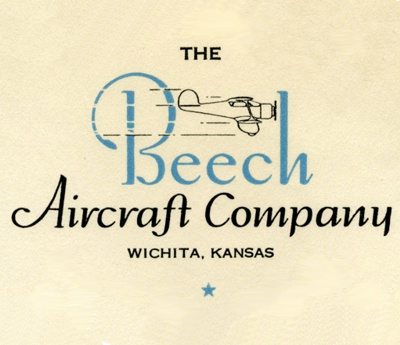By Ron Wilson, director of the Huck Boyd National Institute for Rural Development at Kansas State University.
Cessna. Beechcraft. Stearman. These are some of the classic names of airplanes and aviation companies. Those names belong to men who were pioneers of the aviation industry. Today, we will learn about another of the industry’s best leaders. But this aviation business pioneer wasn’t a man – it was a woman.
Last week we learned about aviation industry leader Clyde Cessna. In 1925, Cessna and another man named Lloyd Stearman created an airplane company along with a young test pilot named Walter Beech.
Walter Beech came from a farm in Tennessee. He built a glider at the age of 14 and served in the U.S. Army Air Corps during World War I. In 1921, he came to work for an airplane company in Wichita. Four years later he joined Lloyd Stearman and Cessna to form Travel Air Manufacturing Company. Here he met a woman named Olive Ann Mellor.
Olive Ann came from Waverly in eastern Kansas. She attended business school in Wichita and then was bookkeeper for a company in Augusta before becoming bookkeeper and then office manager for Travel Air Manufacturing. She and Walter Beech were married in 1930.
In the following year, Travel Air was purchased by the Curtiss-Wright Airplane Company. Walter Beech became president of Curtiss-Wright, but he didn’t like the fact that those duties kept him in New York, away from the production of airplanes.
In 1932, he and his wife Olive Ann came back to Wichita to form their own new business: Beech Aircraft Company. Walter was president of the company. Olive Ann was secretary-treasurer.
The company goal was to attain higher standards of airplane performance. In 1933, their innovative Staggerwing design airplane won the Texaco trophy race. Soon the Beech Staggerwing airplanes were breaking records all over the world. The Twin Beech, unveiled in 1937, was another major success.
In 1940, Walter Beech became ill with encephalitis. Olive Ann stepped in to run the company and did so successfully until his return. During World War II, the Beech Aircraft Company built more than 7,000 planes for the U.S. war effort.
After the war, Beech unveiled the V-tailed Bonanza which was another success. The Bonanza was used to make the longest nonstop solo flight on record by flying 4,960 miles from Honolulu to New Jersey in 36 hours.
The Beech business was continuing to grow, but in 1950 Walter Beech suddenly perished from a heart attack and the company was again plunged into uncertainty. Olive Ann Beech stepped into the leadership role yet again. She was elected by the board of directors as president and chairman of the board. For the next 18 years she served in this capacity and presided over a remarkable period of growth.
The company grew its aviation business and even diversified to assist NASA with the development of cryogenic systems in the 1950s. In the 1960s, the company introduced the King Air which quickly established itself as the industry standard in corporate jetprops. Today, the various King Air models maintain a market share of more than 90 percent in their class.
In 1980, Beech Aircraft was purchased by Raytheon. Olive Ann Beech served on the Raytheon Board of Directors until she became chairman emeritus in 1982. She passed away in 1993 after receiving many honors. For example, the highest honor which the aviation industry bestows is the Wright Brothers Memorial Trophy which was awarded to her by the National Aeronautic Association in 1980 “for five decades of outstanding leadership in the development of general aviation.” She was inducted into the American National Business Hall of Fame in 1983 and became the first inductee in the Kansas Business Hall of Fame in 1986.
That’s quite an accomplishment for someone who came from the rural community of Waverly, Kansas, population 581 people. Now, that’s rural.
Cessna. Stearman. Beechcraft. These are pioneers of the aviation industry, and one of its key leaders was a woman, Olive Ann Beech.
And there’s more. Cessna and Beech were partners of Lloyd Stearman, whose name for his classic biplane still endures today. We’ll learn about that next week in Kansas Profile.

